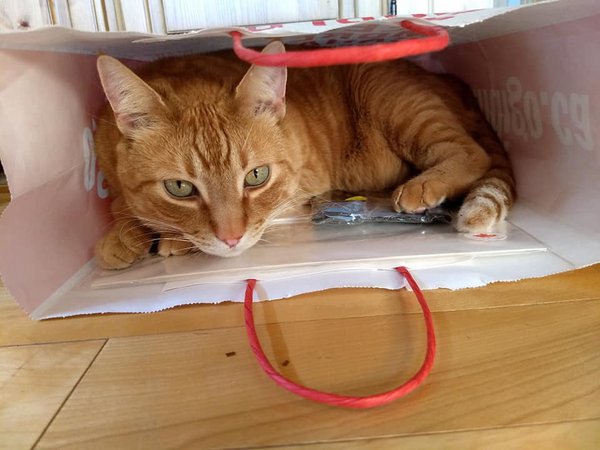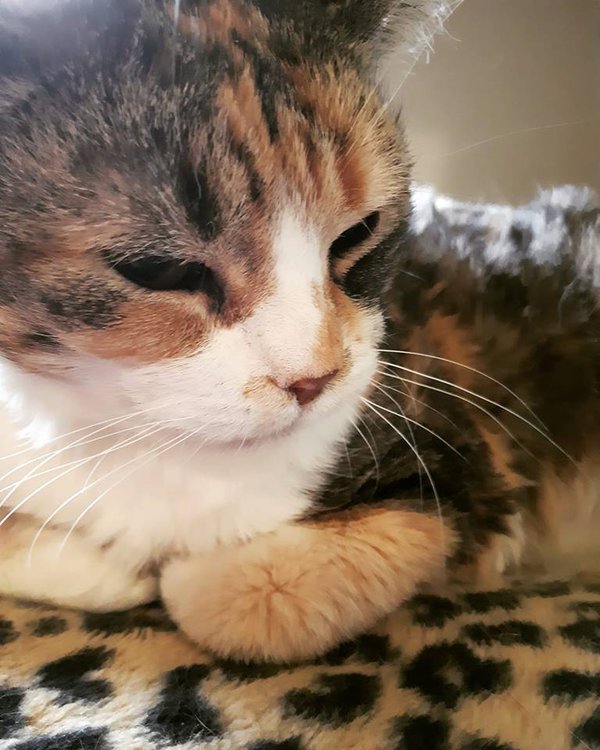Living with a Diabetic Cat

Diabetes impacts many humans, but did you know it is also quite common among cats? We have two cats at our centre right now that deal with it everyday. Sketch and Muggles. Muggles was lucky and found a foster home, but Sketch is still in need of a foster or a forever home. Telling potential adopters that Sketch has Diabetes often turns them away - mostly because the idea is that it will be a lot of work. They aren't entirely wrong, but understanding how to live with a diabetic cat and the lifestyle changes it brings makes the idea of it a little less daunting.
Katrina fostered Muggles (and his buddy Tigger) for just over 6 months ago. This is her take on living with a diabetic cat!
Whilst the SPCA shelter is a fantastic and caring facility, providing a diabetic cat with a temporary home they feel safe and secure in as well as the extra care and attention they need can make all the difference in helping them become healthier and happier. And, of course a healthy and happy cat is much more likely then to find their forever home.
Fostering a diabetic cat can be incredibly rewarding. All our Foster Parents have said so. However, it is important to understand the needs of a diabetic cat and what that means to you if you are considering becoming a Foster Parent.
A summary of the key needs of a diabetic cat are:
-Regular feed times of diabetic food.
-Regular injections of insulin.
-Regular monitoring of their blood sugar levels.
-Staying aware of any changes in their behaviour (becoming sluggish or overly sleepy)
-Checking their pee or poo as lots of pee or runny poo may indicate a change in their blood sugar levels.
-Reviews of the cat’s progress with the SPCA / vet (usually by phone but sometimes this may mean taking the cat in for a check up)
-Love and play.
You’ll build a strong bond with them - the more you love them, the more they’ll love you back - so be prepared that when they do get placed in a forever home it will pull at you heartstrings!
Here’s an insight in what this will practically mean you’re committing to:
Daily:
Regular feed times - 7am and 7pm (you may choose different times but feed times need to be spaced approx 12hrs apart to try to keep blood sugar levels regulated)
Regular injections of insulin - administered twice daily straight after food as it’s important to know that the cat has eaten before they get their shot. This means you will need to commit to having someone around at these times every day who can feed the cat and administer the injection.
It can seem daunting at first to need to inject a cat but, honestly, it’s surprising how quickly you become comfortable doing it. Diabetic cats, like Sketch and Muggles, are used to their daily needles - they barely even flinch!
Approx every 2 weeks:
Regular monitoring of their blood sugar levels - Done approx once every 2 weeks at their high point and their low point. Depending on the result you may need to change the amount of insulin they are given. Again the SPCA / vet can guide you on what’s appropriate. It is painless for the cat to take a blood sample which is done by pin pricking a vein in one of their ears. The SPCA can provide you with the kit to use and give you a demo so that you feel confident doing it.
Approx every few months:
Note: The time at which the cat’s blood sugar high and low points occur will differ depending on the cat. The high and low points can be determined by doing what is called a blood sugar level curve. You won’t need to do this too often, maybe once every few months and you will be guided by the SPCA / vet on when it’s appropriate to do a curve. It means taking a blood sample regularly say every 2 hrs over the course of 12hrs. Just like humans it’s important to know what the BSL of a cat is as there is a “healthy range”. If the level strays above or, more seriously, below those levels, the cat can become comatose and it may become life threatening. The SPCA / vet can advise you on what change, if any, to make to the amount of insulin you administer.
Daily:
Love and play - Diabetic cats thrive with love. They also benefit hugely from play as diabetes can cause nerve damage and limit their mobility. With regular play the nerves can heal. Truly, they dan heal. It’s remarkable and incredibly rewarding to witness.
Did you know?
Cats are the only animals on the planet that have the ability to become non-diabetic!
Is there a cost to Fostering a Diabetic Cat?
No. There is no financial cost. What you need to provide is the time and care to help the cat to thrive.
If you think this is something you are interested in doing, please contact us as we have cats that would benefit from your help.
